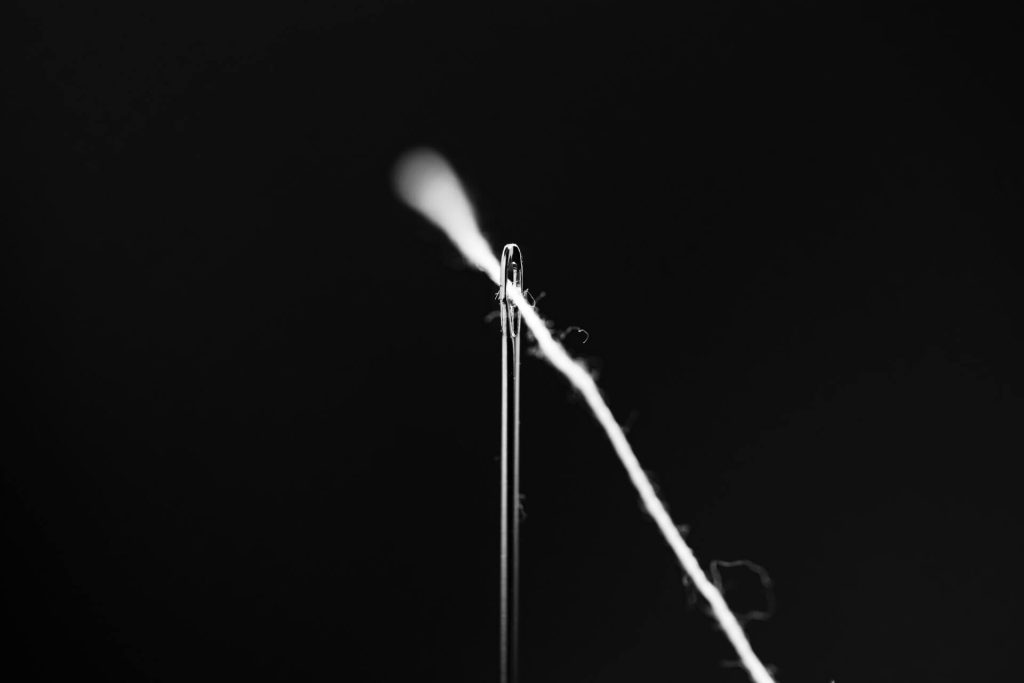Types of Sewing

It is also called sewing. Sewing includes hand sewing and sewing machine sewing. In Korea, until the late 19th century, until the influence of Western civilization, everyone had hand-sewn hands with needles, and various unique sewing methods were developed, unlike in China and Japan in how to hold them.
The basic method of hand sewing is mainly as follows.
⑴ Groove: It is widely used as the most basic sewing. It is a method of overlapping cloths and sewing them loosely without multiplying the sweat, and the sewing sweat should be even and the lower and upper hands should not be reduced. It is widely used for all seams and skirt widths of layered and cotton clothes except gourd clothes.
⑵ Sewing: Sewing is used to strengthen the seams. After a sweat, turn back all the needle sweat and open it again. Sewing on sewing machines is a method that uses the principle of sewing.
⑶ Countervailing quality: Stronger than grooving and harsher than sewn, one-half of the time.
⑷ Sensory: There are two ways to sensitize. One is to open the needle upright when winding from the inside, and instead, the thread appears diagonally. The other is to stick the needle diagonally to make the thread small when it is wrapped from the outside. Do it this way when you’re getting a taste of Korean socks.
⑸ Ball drawing: There are two ways to draw a ball, which is used to finish a window hole, etc. so that the sewing sweat appears small on both sides. The second method is to fold the hem, seep inside the hem, and open the outer part one by one.
⑹ Sangchimjil: It is used to decorate or strengthen the seams and depending on the number of needles, it is called “Sweat Sangchim”, “Sweat Sangchim”, and “Sweat Sangchim”. One sweat is done in the same way as the half sound quality, but the gap is wide, and two sweat and three sweat is the two or three sweat suits are spaced apart by two or three sweat.
⑺ Needle: Used to hold two or more layers of persimmons. Scoop 0.5cm of the inside from the tip of the cloth to about 3cm in length. Therefore, 3cm apart on the outside and 0.5cm apart on the inside come out.
⑻ Joash acupuncture: Hoash the inside and outside about 0.5cm from the tip of the cloth with 0.3cm of sweat. It is used for thin silk fabrics that are worn without extracting the needle thread.
⑼ Trapezius: It is used to combine finished ends such as thimble and nori, and it shows both solid and decorative effects. It is a method of removing the needle from the upper left, inserting it into the lower right, pulling it out to the lower left, inserting it back into the upper right, and sewing it alternately.
⑽ Bird’s foot: Used as a decoration or for tightening the hem of a thick persimmon, starting from the left and sewing to the right. Remove the needle from 0.5cm away from the top of the bent hem, float 0.1cm from the right to the left, and repeat by floating 0.1cm from the right to the left of the bent hem so that the threads cross from top to bottom.
⑾ Whistling: To prevent the pusher from loosening, it is usually a method of swirling one sweat or five to six sweats at a depth of 0.5 to 1 cm at intervals of 1 cm.
⑿ Sewing: There are four types of seams: Tongsol, Garumsol, Gospel, and Samson, which are used when sewing machines need to strengthen the seams.
① Tongsol is a method of using cloth that is easily loosened, and first, leave a seam allowance of 0.2~0.3cm from the outside, and then bend the seam allowance and put it back in with a seam allowance of 0.3~0.5cm from the inside.
② Garumsol is a method of separating the seam allowance by punching it once inside, and since there is a risk of loosening the thread, cut the seam allowance with pinking scissors or fold it shallowly once. Thick persimmon shoulders such as wool and cotton and side seams are often used for folding and folding brushes, warp brushes, pink brushes, grooved brushes, and tape waiting brushes.
③ Gopsol is a method of finishing one seam three times to make it thin and prevent the threads from loosening. First, two layers are stacked side by side, and the seam allowance is bent, and then the remaining seam allowance is cut with scissors and bent again.
④ Ssamsol is a method of first placing one side of the seam allowance by 0.3~0.5cm and hitting it once, then wrapping a narrow seam allowance with a wide seam allowance and pressing it flat. From the inside, there are two rows of brushes, and from the outside, only one row of brushes can be seen.